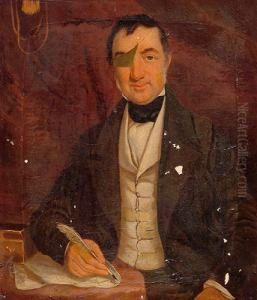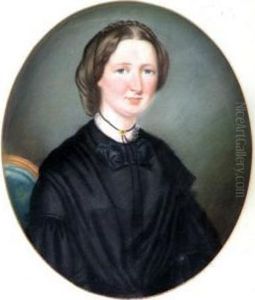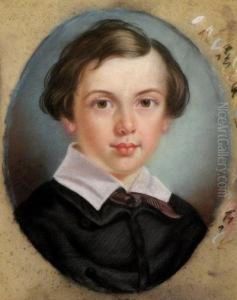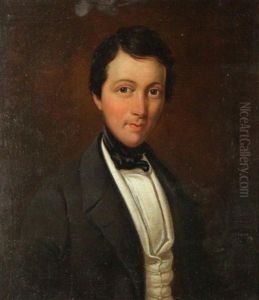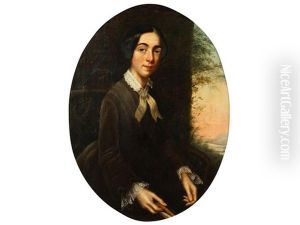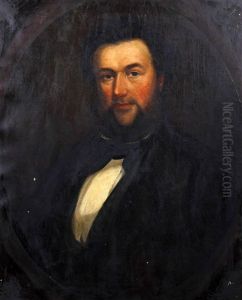William Roos Paintings
William Roos was a Welsh artist known for his portraits and animal paintings. Born in 1808 in Trefeglwys, Montgomeryshire, Wales, he was the son of a Swedish immigrant father and a Welsh mother. Roos exhibited a natural talent for art from a young age, and his skills were nurtured by his father, who was also an artist. At the time, Wales was undergoing a cultural revival, and as a Welsh speaker, Roos was able to contribute significantly to this movement through his art.
Roos received his formal training at the Royal Academy Schools in London, after which he returned to Wales to establish himself as a painter. He became well-known for his detailed and sensitive portraits, which often captured the character and social status of his subjects. Roos's portraits include notable figures of Welsh society, as well as more humble rural individuals, reflecting a broad social spectrum. His works were characterized by fine brushwork and a keen attention to detail, particularly in the depiction of fabrics and textures.
Apart from portraits, Roos was also celebrated for his paintings of animals, especially horses and dogs. His ability to render the anatomy and temperament of these creatures with accuracy and empathy made him a sought-after artist for commissions by the gentry and others who desired to immortalize their prized animals on canvas.
Throughout his career, Roos remained connected to his Welsh roots, and he often traveled throughout Wales to capture the likenesses of its people and their way of life. His legacy is preserved in the form of his artwork, which provides historical insights into Welsh culture during the 19th century. William Roos died in 1878, leaving behind a body of work that is still appreciated for its technical skill and cultural significance.

